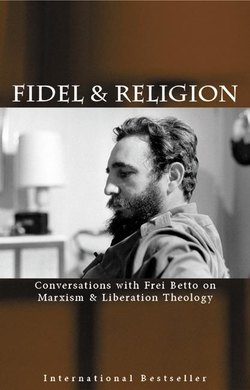Читать книгу Fidel & Religion - Fidel Castro - Страница 6
ОглавлениеFidel Castro Ruz was born in Birán, in the former province of Oriente, on August 13, 1926. Born into a well-off, landowning family, he attended elite Catholic private schools in Santiago de Cuba and Havana, and graduated from law school at the University of Havana in 1950.
While at university, he joined a student group against political corruption. He was a member of the Cuban People’s Party (also known as the Orthodox Party) and in 1947 became a leader of its left wing. That same year, he volunteered for an armed expedition against the Trujillo dictatorship in the Dominican Republic, though the expeditionaries were unable to leave Cuba to carry out their plans. As a student leader, Fidel Castro travelled to Venezuela, Panama, and Colombia to help organize a Latin American anti-imperialist student congress to coincide with the founding conference of the US-sponsored Organization of American States (OAS). While in Colombia, he participated in the April 1948 popular uprising in Bogotá.
After Fulgencio Batista’s March 10, 1952, coup d’état in Cuba, Fidel began to organize a revolutionary organization to initiate armed insurrection against the US-backed Batista dictatorship. He organized and led an unsuccessful assault on the Moncada army garrison in Santiago de Cuba on July 26, 1953, for which he and over two dozen others were captured, tried, found guilty, and imprisoned. More than 60 revolutionaries were murdered by Batista’s army during, and immediately after, the Moncada attack. In prison, Fidel edited his defense speech from the trial into the pamphlet History Will Absolve Me, which was distributed in tens of thousands of copies and became the program of the July 26 Movement. Originally sentenced to 15 years, he and his comrades were released from prison in May 1955, after 22 months, as a result of a public campaign for amnesty.
On July 7, 1955, Fidel left for Mexico, where he began to organize a guerrilla expedition to launch armed insurrection in Cuba. On December 2, 1956, along with 81 other fighters, including his brother Raúl, Che Guevara, Camilo Cienfuegos, Juan Almeida, and Jesús Montané, Fidel reached the Cuban coast aboard the cabin cruiser Granma. For the next two years, he directed the operations of the Rebel Army, in addition to continuing as central leader of the July 26 Movement. After an initial setback, the guerrillas were able to reorganize their forces, and by late 1958 had successfully extended their struggle from the Sierra Maestra mountains throughout the island.
On January 1, 1959, Batista fled Cuba. In response to a call by Fidel Castro, hundreds of thousands of Cubans launched an insurrectionary general strike that ensured the victory of the revolution. Fidel arrived triumphantly in Havana on January 8 as commander-in-chief of Cuba’s victorious Rebel Army. On February 13, 1959, he was named prime minister, a position he held until December 1976, when he became the president of the Council of State and the Council of Ministers.
He has been first secretary of the Central Committee of the Cuban Communist Party since its founding in 1965.
